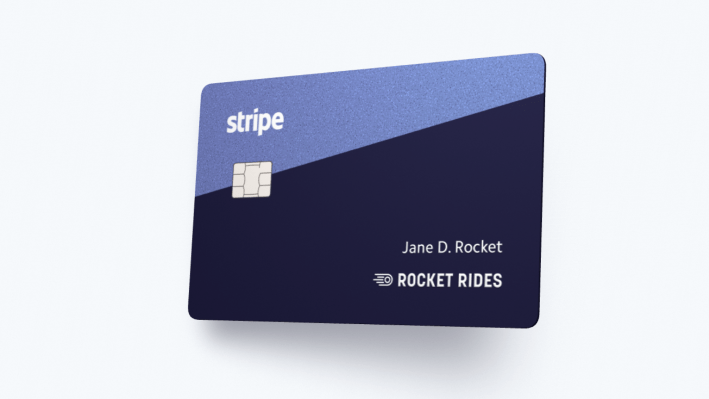Last week, when the popular payments startup Stripe made some waves with its first move into money lending through the launch of Stripe Capital, we reported that the company was also soon going to be launching a credit card. Now, that news is official. Today, the company is doubling down on financing with the launch of corporate cards for business customers.
Announced officially today to coincide with the company’s developer event Stripe Sessions, the Stripe Corporate Card — as the product is officially called — is a Visa that will be open to businesses that are incorporated in the U.S., although they can operate elsewhere.
Notably, users are expected to pay their balance in full each month, so for now there is no interest rate, or fee, to use the card, with Stripe making its money by way of the interchange fee that comes with every transaction using the card.
“We’re not freezing cards based on late or no payments,” Cristina Cordova, the business lead overseeing the launch, said in an interview. “A pretty common reason for non-payment is that a person switched bank accounts and forgot to update the information. But we think we’ll have fewer problems because we have banking information for accepting revenue, by way of our payments business.”
The move is another major step ahead for Stripe as it continues to diversify its business and bring on more financial products to become a one-stop shop for e-commerce and other companies for all the transactions they might need to make in the course of their lives. It is a little ironic that it’s taken years for credit cards to get added into the mix, considering Stripe’s earliest homepages and marketing efforts were built around the design of a credit card (a reference to taking payments online, not issuing credit, of course).
In any case, the list of products now offered by Stripe is long — longer, you might say, than it takes to incorporate a Stripe service into a developer workflow. In addition to its API-based flagship payments product — which is available as a direct service or, via Stripe Connect, for third parties via marketplaces and other platforms — it offers billing and invoicing, in-person payment services (via Terminal), business analytics, fraud prevention on transactions (Radar), company incorporation (Atlas) and a range of content around business strategy.
Some of these Stripe products are free to use, and some come at a price: The main point for offering them together is to build more engagement and loyalty from customers to keep them from migrating to other services. In that regard, credit cards are a cornerstone of how businesses operate, to handle day-to-day expenses in a more accountable way, and this is an area that is already well-served by others, including startups like Brex but also a plethora of challenger and traditional banks. So as much as anything else, this is a clear move to help stave off competition.
At the same time, it underscores how Stripe is leveraging the huge amount of data that it has amassed about its users and payments on the platform: It’s not just about enabling single services, but about using the byproducts of those services — data — to put fuel into new products.
Today, to underscore its global ambitions in that regard, Stripe is adding some expansions to several of its existing products. For example, it will now allow businesses to make payouts in local currencies in 45 countries (an important detail, for example, for marketplaces and network-based companies like ridesharing businesses).
The credit card product will follow a model similar to that of Stripe Capital. As with the lending product, there is a single bank issuing the credit and the card. Amber Feng, head of financial infrastructure for Stripe, confirmed to me that it is actually the same bank that’s providing the cash behind Stripe Capital. Stripe is still declining to name the bank itself, but hints that we may hear more about it soon, which leads me to wonder what news might be coming next.
(Funding perhaps would make sense? The company has raised a whopping $785 million to date and has a valuation of $22.5 billion at the moment. Given that Stripe has made indications that a public listing is not on the cards soon, that might imply, with the launch of these new financing products, that more capital might be raised soon.)
Also similar to Stripe Capital, the underwriting of the card is based on Stripe data. That is to say, business users are verified and approved based on turnover (revenues) as measured by the Stripe payments platform itself; and in cases where applicants are “pre-revenue,” they can be evaluated based on other data sources. For example, if they have used Stripe Atlas to incorporate their businesses, the paperwork supplied for that is used by Stripe to vet the customer’s suitability for a credit card.
Notably, the cards will be delivered in the spirit of instant gratification: If you are applying and get approved, you can within minutes download a virtual card to your Apple Wallet as you await the physical card to arrive in the post.
Stripe is big on data in its own business, and it’s bringing some of that into this product with spending controls that can be set by person and by category; real-time expense reporting by way of texts; rewards of 2% back on spending in the business’s most-used categories; and integration with financial software like QuickBooks and Expensify.
